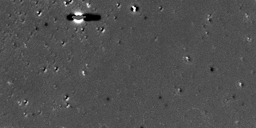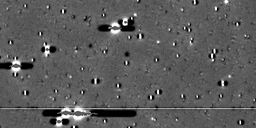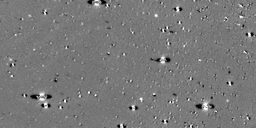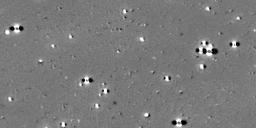It is nothing special, but I have discovered several doubly eclipsing binaries in MOA database. The figure below is one of them. It was achieved by first substracting the mean light curve with 200 bins from the one folded with P=0.409d and then redoing the period analysis to see if there is any hidden periodic variation.
Author Archives: alex
Minor Planets in the MOA Database
Here are some little animations of minor planets passing through some of the crowded star fields in the MOA database. The images are difference images, meaning that the images of stars have been subtracted away. What you’re looking for in each of these animations below is a moving dot — an asteroid moving through the field.
Each one of these images is 1 / 640 th of the total field of view of one of the MOA-II telescope’s fields. And MOA observes 22 fields towards the Galactic Centre. I found these by eyeballing the images. Working on a better way.
Top one cluster user
Top one cluster user in terms of total cores used. And I can foresee it is going to last for a year.
My honours presentation slides
Accidentally found my honours presentation slides, which I thought it was lost, in my old mail box, so I upload and share it here.
I would say that the honours year is tough. It is tough because not only you have to work hard on your research (and hope the things go smooth), but you also have to be able to finish your coursework in outstanding level. In my year, there were 15 Physics honours students (including me) (it is very unusual). I still remember how stressful it was in the first semester that I had struggled for a month to make the Chandra package work on the Linux system (the problem could not be solved and I had to run everything on my supervisor’s computer using ssh). But it is still one of the most joyful periods in my life.
PhD candidate – Man Cheung Alex Li
Hello, thanks for visiting our blog. For those who are curious about me and my study, let me introduce myself here.
As mentioned by Dr. Nicholas Rattenbury in his latest post, I am one of his PhD candidates, along with Ashna Sharan. My research is focused on eclipsing binaries that I’ll be looking at to searching for any signals of extrasolar planets from MOA (Microlensing Observations in Astrophysics) dataset. It isn’t an easy project, full of challenge and uncertainty, but, at least as I find it to date, playful and joyful as well.
As a person who grew up in Hong Kong, the most light-polluted and money-oriented city in the world, I feel exquisitely fortunate to have been on the southern hemisphere, here and there, to study astronomy. Yup, indeed I graduated from Monash University in Australia with BSc(Hons), first class. During the honours year, I picked up a project on X-ray study of supernova remnant SNR W28. Now, thanks to Dr. Nicholas Rattenbury, I am being at the University of Auckland as an optical astronomer. “Low” energy, yet exciting.







